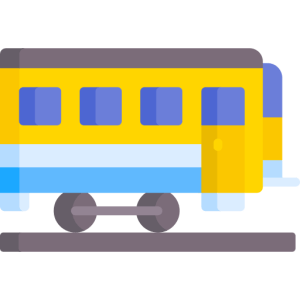Funding Future Transport in Aotearoa New Zealand
We asked New Zealanders “who should pay for what?”
Land transport includes:
 Cars
Cars Motorbikes
Motorbikes Trucks
Trucks Buses
Buses Trains
Trains Walking
Walking Cycling
Cycling Roads, paths
Roads, paths
and tracks
What was the project about?
The existing funding model for transport infrastructure and services may not be sufficient for the investment required to implement changes to future-proof the system, or to keep pace with increasing costs of maintaining system resilience. In this context, alternative funding mechanisms and policy approaches must be explored. Choices on investment and revenue gathering mechanisms affect all New Zealanders, so it is critical to ensure that changes to the system align with public preferences and are supported by the public.
Te Mānatu Waka Ministry of Transport commissioned this project to understand what the public thinks about the future of transport, and how it should be funded to meet future needs.
The project used a combination of innovative approaches to ask the broad question “who should pay for what?” to support the future transport system.
How did it work?
The project was conducted in two phases, starting with an online engagement using the Pol.is wiki-survey platform, which took place in late 2022.
This was followed in phase 2 by a series of deliberative ‘minipublic’ workshops to dive more deeply into the issues. The project concluded in April 2023.
The opinions expressed in the phase 1 Pol.is exercise served to help frame the discussions in the deliberative workshops (minipublics) of phase 2. These workshops took place in four locations across New Zealand, involving randomly selected groups of about 30 participants that reflected the demographic makeup of each location. Each group met for a half-day Saturday session to deliberate on the issues, listen to each other’s perspectives and ask questions of experts.
The Ministry wanted to understand what the public thinks about the future of transport, and how it should be funded to meet future needs
What was discussed?

Some of the questions that framed the conversations were:
- How will we pay to maintain and improve the transport network if road vehicles travel less and less revenue is collected from fuel excise duty (FED) and road user charges (RUCs)?
- How should the transport system balance the promotion of well-being, safety, access and connectivity, alongside environmental and economic outcomes?
- How should we pay for the major investments needed to transition to a lower emissions transport system (e.g., EV charging infrastructure, more public transport, bike lanes)?
- How should we pay for the range of transport options needed in our towns and cities so that people have more choices about how and when they travel? How should we pay for a transport system that is more vulnerable to shocks like extreme weather events?
- How do we ensure that we are meeting the needs of all who use our transport system – including businesses, people who live in smaller towns and rural areas, people who are on lower incomes, or people with disabilities?
- Should we make more use of pricing tools (e.g., tolls, congestion and pollution charges) to encourage people and companies to make different travel choices?
- If we are encouraging more use of public transport, walking and cycling, what should those users pay towards its upkeep? As newer transport forms become more available, eg e-bikes, scooters, should these make a contribution?
- How should other costs that vehicles impose on the system (such as congestion and pollution, and vehicles’ use of scarce land) be accounted for? Should these ‘externalities’ be something that drivers should pay for?
- How should the benefits and costs or new transport infrastructure be shared across society?

Here are some perspectives on funding future transport – what do YOU think?

